Airports Project Reference
Mechanical Insulation Solutions for Airports

Airports play a critical role in the air trans-port value chain requiring massive amounts of energy to conduct daily operations. Energy usage in airports is divided into two sectors with 70% used for electricity needs and 30% for climate control. These facilities contain large terminals, non-passenger buildings, aircraft hangers, and other land operation structures. These buildings are usually equipped with heating and air-conditioning systems, high-power lighting systems, and mechanical equipment. In addition to the electrical energy required for these facility operations, electrical energy is also needed for people-moving, data centers, advanced air transport systems, meteorological equipment, and security provisions. The mass amounts of energy generation required creates carbon dioxide (CO2) and greenhouse gas (GHG) emissions. These GHGs are released into the air when fossil fuels are used to generate electricity and power vehicles. CO2 makes up the majority of GHG emissions, with lesser contributions from nitrous oxide (N2O), methane (CH4), refrigerants, and other compounds.
WHY REDUCE AIRPORT ENERGY USE AND LOWER GHG EMISSIONS?
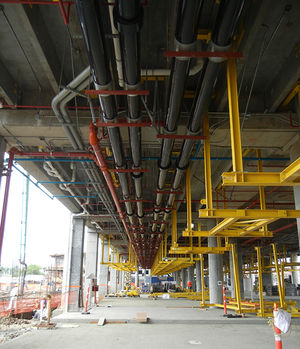 According to statistics the energy consumption of the aviation industry accounts for approximately 8% of the total energy demand of the transportation industry. While this might seem small, when put into context it is clear why reducing airport energy use is so important. Airports are continually trying to manage energy requirements through material sustainability, energy-saving initiatives, environmental policies, and cost management strategies. By reducing energy use, and in turn the generation of GHGs, airports can not only lower energy bills and operating costs, but they can also have a significant environmental impact on CO2 emissions arising from both the air and land operations. Thus, energy management –which includes heating, ventilation, air conditioning and refrigeration (HVAC-R) –is essential.
According to statistics the energy consumption of the aviation industry accounts for approximately 8% of the total energy demand of the transportation industry. While this might seem small, when put into context it is clear why reducing airport energy use is so important. Airports are continually trying to manage energy requirements through material sustainability, energy-saving initiatives, environmental policies, and cost management strategies. By reducing energy use, and in turn the generation of GHGs, airports can not only lower energy bills and operating costs, but they can also have a significant environmental impact on CO2 emissions arising from both the air and land operations. Thus, energy management –which includes heating, ventilation, air conditioning and refrigeration (HVAC-R) –is essential.
HOW AIRPORTS CAN IMPROVE ENERGY EFFICIENCY
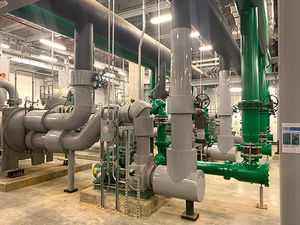
Airports can pursue several different energy efficiency measures simultaneously to manage their energy use such as installing renewable energy systems, improving building insulation, monitoring energy consumption, improving the efficiency of heating, ventilation, and cooling systems, installing motion or timing systems for lighting, or purchasing low or zero-emission vehicles. Of all these options, the maintenance of temperature control within airport passenger terminals typically represents the most significant contribution to energy usage reducing at most airports.¹
¹ www.faa.gov/airports/environmental/air_quality/carbon_emissions_reduction/
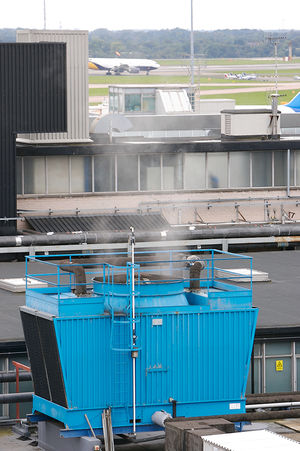
COMPLIANCE AND REGULATIONS
Armacell continuously works to improve testing standards and our products meet strict airport building regulations, International Building Codes, as well as the requirements from organizations like the International Energy Conservation Code (IECC) and ASHRAE, which develop model building codes and performance standards. Armacell’s insulation products meet flame spread and smoke developed indices requirements according to ASTM E84 and UL 723. ArmaFlex® Ultra is UL Certified to UL 723 for thickness up to and including one-inch thickness. While our products meet many compliance standards it is important to note that building codes can vary from state to state and municipality, so specifiers and installers should be sure to select products that are compliant in their region.
SUCCESSFUL AIRPORT PROJECTS
Salt Lake City International Airport, Salt Lake City, Utah
PRODUCTS: AP ArmaFlex® Black LapSeal, AP ArmaFlex®, AP ArmaFlex® FS SA
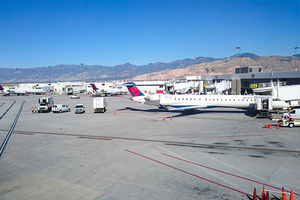
The $1.8 billion Salt Lake City International Airport Terminal Redevelopment Program will completely rebuild the outdated passenger terminal complex and related facilities at the Salt Lake City International Airport. The project is being built in phases with phase one completed with the opening of the consolidated terminal in 2020. Phases two and three began immediately with the redevelopment slated to be fully completed in 2023. Phase three originally was bid with a fiberglass competitor, but the redevelopment team switched to elastomeric ArmaFlex during construction due to concerns about mold. Additionally, installers went back into phase two and one’s HVAC systems to reinsulate with ArmaFlex because of its moisture- resistant characteristics.
Kansas City International Airport, Kansas City, MO
PRODUCTS: AP ArmaFlex, AP ArmaFlex Black Lapseal
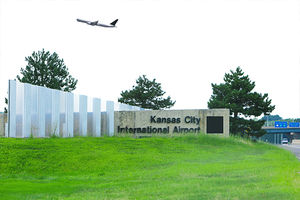
At just over one million square feet, the Kansas City International Airport New Terminal is the largest infrastructure project in Kansas City’s history. The structure will replace the existing Terminal A that was demolished in 2019 and will be completed in 2023. ArmaFlex insulation was selected for insulating HVAC ducts and pipes on this project over a specified competitor who submitted a lower bid due to a strong partnership with a woman- owned insulation contracting business.
Denver International Airport, Denver, CO
PRODUCTS: AP CoilFlex®
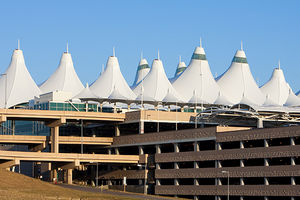 The $770 million Denver International Airport Great Hall project consists of three phases that focus on building a new ticketing/check-in space, a new security checkpoint, and a complete build-out of the Jeppesen Terminal, improving operations and passenger flow today and making it ready for future growth. The largest airport in the United States and the second largest airport in the world chose to install AP CoilFlex insulation duct liner on the HVAC systems for energy efficiency, indoor air quality, and acoustical controls.
The $770 million Denver International Airport Great Hall project consists of three phases that focus on building a new ticketing/check-in space, a new security checkpoint, and a complete build-out of the Jeppesen Terminal, improving operations and passenger flow today and making it ready for future growth. The largest airport in the United States and the second largest airport in the world chose to install AP CoilFlex insulation duct liner on the HVAC systems for energy efficiency, indoor air quality, and acoustical controls.
LaGuardia Airport, Queens, NY
PRODUCTS: AP ArmaFlex Black LapSeal
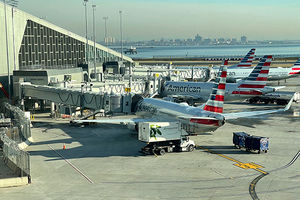 The Central Terminal Building (CTB) Replacement project consists of a new Terminal B, a Central Hall, a new garage, a new central heating and refrigeration plant, a distribution facility, and the construction of aircraft ramp areas, roads, and utilities. The CTB Replacement project team conducted an analysis over the lifecycle of the project to demonstrate the social, environmental, and financial benefits associated with improving energy performance, managing indoor air quality, reducing water use, reducing heat island effects, and using low-emitting materials. Ensuring that all construction materials were sustainable was an essential part of the project. Greenguard® GOLD-certified ArmaFlex was not originally specified for this project but consequently selected for the HVAC duct and pipe insulation due to its ability to reduce energy loss and protect indoor air quality.
The Central Terminal Building (CTB) Replacement project consists of a new Terminal B, a Central Hall, a new garage, a new central heating and refrigeration plant, a distribution facility, and the construction of aircraft ramp areas, roads, and utilities. The CTB Replacement project team conducted an analysis over the lifecycle of the project to demonstrate the social, environmental, and financial benefits associated with improving energy performance, managing indoor air quality, reducing water use, reducing heat island effects, and using low-emitting materials. Ensuring that all construction materials were sustainable was an essential part of the project. Greenguard® GOLD-certified ArmaFlex was not originally specified for this project but consequently selected for the HVAC duct and pipe insulation due to its ability to reduce energy loss and protect indoor air quality.
Portland International Airport, Portland, OR
PRODUCTS: AP ArmaFlex
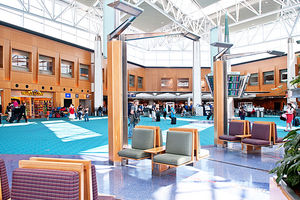
Maintaining operations and passenger wellbeing during the $2 billion PDX Next construction project was critical for Portland International Airport. By coordinating the phased installation of new mechanical, electrical, plumbing, and information technology systems, the airport was able to achieve this goal. AP ArmaFlex was chosen for the HVAC refrigerated piping and vessels to help create comfortable, healthy spaces optimized for sustainability in this project.
Dallas Fort Worth International Airport, Dallas, TX
PRODUCTS: AP ArmaFlex
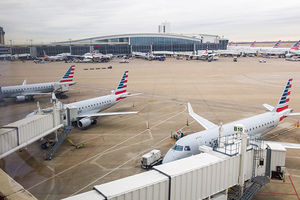 An ongoing major construction project is underway and will continue through 2025 for Dallas Fort Worth International Airport. This renovation will build a Terminal D extension as well as a Terminal F construction and updates to Terminal C. Terminal F is expected to be one of the most significant expansions DFW Airport has ever seen adding a 150,000 ft2 concourse consisting of up to 24 new gates. In conjunction with updates to Terminal C, the entire project will cost between $3 billion and $3.5 billion. AP ArmaFlex was selected for the HVAC pipes and vessels, as well as the hot and cold water pipes for its thermal efficiency and ease of installation.
An ongoing major construction project is underway and will continue through 2025 for Dallas Fort Worth International Airport. This renovation will build a Terminal D extension as well as a Terminal F construction and updates to Terminal C. Terminal F is expected to be one of the most significant expansions DFW Airport has ever seen adding a 150,000 ft2 concourse consisting of up to 24 new gates. In conjunction with updates to Terminal C, the entire project will cost between $3 billion and $3.5 billion. AP ArmaFlex was selected for the HVAC pipes and vessels, as well as the hot and cold water pipes for its thermal efficiency and ease of installation.
FIRST CLASS SOLUTIONS
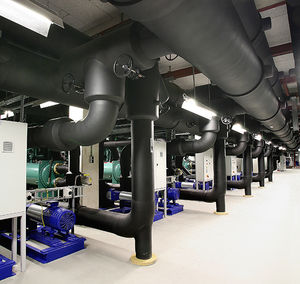 Airports can benefit greatly from superior energy efficiency products that help solve energy use and cost issues. Bringing more than half a century of science, expertise, and innovation to foam technology, Armacell has the expertise to create specialized solutions to meet the strict requirements of the transportation industry. Our advanced insulation product portfolio includes a variety of Airport Solutions to support HVAC applications, cold lines and chilled water lines, mechanical systems, chillers, UV, and high temperature areas, and also includes accessories like pipe hangers, adhesives, and tape. Armacell’s Solutions Portfolios Packages offer a wide range of products tailored to code-compliance², performance and budget.
Airports can benefit greatly from superior energy efficiency products that help solve energy use and cost issues. Bringing more than half a century of science, expertise, and innovation to foam technology, Armacell has the expertise to create specialized solutions to meet the strict requirements of the transportation industry. Our advanced insulation product portfolio includes a variety of Airport Solutions to support HVAC applications, cold lines and chilled water lines, mechanical systems, chillers, UV, and high temperature areas, and also includes accessories like pipe hangers, adhesives, and tape. Armacell’s Solutions Portfolios Packages offer a wide range of products tailored to code-compliance², performance and budget.
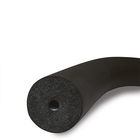
ArmaFlex, closed cell foam insulation provides superior protection against thermal losses, condensation, and moisture accumulation on ducts, pipes, and large mechanical systems. Low thermal conductivity and a built- in vapor retarder effectively prevent the formation of condensation and spread of moisture, which can lead to mold and significant losses of thermal efficiency. ArmaFlex insulation is ideal for below ambient applications, especially in humid climates where high dew points increase the chances for condensation on chilled water piping. This low-VOC product is dust-, fiber- and formaldehyde-free to eliminate air-stream pollution and Greenguard GOLD-certified to meet the most stringent indoor air-quality requirements.
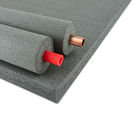 ArmaFlex Ultra with Flame Defense™ Technology is the first elastomeric insulation in the industry to be Classified by UL to UL 723 at 25/50. ArmaFlex Ultra resists burning and reduces smoke development. It is this commitment that elevated ArmaFlex Ultra to meet the current IMC building codes which require that mechanical insulation products used in an air plenum be “listed and labeled” as achieving specific flame and smoke ratings, and that these ratings be regularly certified by a third-party lab.
ArmaFlex Ultra with Flame Defense™ Technology is the first elastomeric insulation in the industry to be Classified by UL to UL 723 at 25/50. ArmaFlex Ultra resists burning and reduces smoke development. It is this commitment that elevated ArmaFlex Ultra to meet the current IMC building codes which require that mechanical insulation products used in an air plenum be “listed and labeled” as achieving specific flame and smoke ratings, and that these ratings be regularly certified by a third-party lab.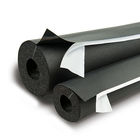 AP ArmaFlex Black LapSeal, the original flexible elastomeric pipe insulation with an innovative lap seal for greater seam security and increased protection against condensation, mold and energy loss. Features include a wide lap seal closure system, with an easy-to-release liner tab. For added security, the low-profile lap seal ensures the longitudinal seam stays closed and looks neat. It’s the ideal solution for speeding up install times or making hard-to-reach installation areas easier to accommodate.
AP ArmaFlex Black LapSeal, the original flexible elastomeric pipe insulation with an innovative lap seal for greater seam security and increased protection against condensation, mold and energy loss. Features include a wide lap seal closure system, with an easy-to-release liner tab. For added security, the low-profile lap seal ensures the longitudinal seam stays closed and looks neat. It’s the ideal solution for speeding up install times or making hard-to-reach installation areas easier to accommodate.
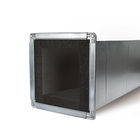
AP ArmaFlex FS (Flame Spread) is designed for applications requiring fire and smoke ratings of 25/50. AP ArmaFlex FS meets ASTM E 84 at 25/50 for 1-1/2" and 2” thicknesses. AP ArmaFlex FS EPDM-based duct liner and wrap are fiber-free, closed- cell, thermal and acoustical insulation for ducts. They are engineered to safeguard IAQ, attenuate HVAC noise, and reduce energy loss when used to line or wrap HVAC ductwork. Lining or wrapping ducts will result in more comfortable occupant spaces, reduced energy costs and quieter indoor environments.
² Check building codes that apply to your project to ensure that you specify the correct product for the job.
Download Airports Project Reference here.
